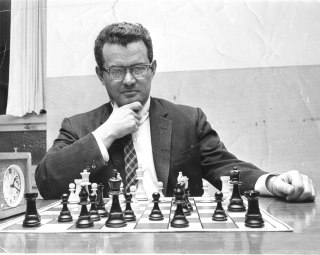
The history of calculus is fraught with philosophical debates about the meaning and logical validity of fluxions or infinitesimal numbers. The standard way to resolve these debates is to define the operations of calculus using epsilon–delta procedures rather than infinitesimals. Nonstandard analysis instead reformulates the calculus using a logically rigorous notion of infinitesimal numbers.

Abraham Robinson was a mathematician who is most widely known for development of nonstandard analysis, a mathematically rigorous system whereby infinitesimal and infinite numbers were reincorporated into modern mathematics. Nearly half of Robinson's papers were in applied mathematics rather than in pure mathematics.

In mathematics, the system of hyperreal numbers is a way of treating infinite and infinitesimal quantities. The hyperreals, or nonstandard reals, *R, are an extension of the real numbers R that contains numbers greater than anything of the form

In mathematics, an infinitesimal number is a quantity that is closer to zero than any standard real number, but that is not zero. The word infinitesimal comes from a 17th-century Modern Latin coinage infinitesimus, which originally referred to the "infinity-th" item in a sequence.

In calculus, Leibniz's notation, named in honor of the 17th-century German philosopher and mathematician Gottfried Wilhelm Leibniz, uses the symbols dx and dy to represent infinitely small increments of x and y, respectively, just as Δx and Δy represent finite increments of x and y, respectively.
In model theory, a transfer principle states that all statements of some language that are true for some structure are true for another structure. One of the first examples was the Lefschetz principle, which states that any sentence in the first-order language of fields that is true for the complex numbers is also true for any algebraically closed field of characteristic 0.
In mathematics, nonstandard calculus is the modern application of infinitesimals, in the sense of nonstandard analysis, to infinitesimal calculus. It provides a rigorous justification for some arguments in calculus that were previously considered merely heuristic.
In mathematics, differential refers to several related notions derived from the early days of calculus, put on a rigorous footing, such as infinitesimal differences and the derivatives of functions.
In mathematical logic, in particular in model theory and nonstandard analysis, an internal set is a set that is a member of a model.
Smooth infinitesimal analysis is a modern reformulation of the calculus in terms of infinitesimals. Based on the ideas of F. W. Lawvere and employing the methods of category theory, it views all functions as being continuous and incapable of being expressed in terms of discrete entities. As a theory, it is a subset of synthetic differential geometry.
Howard Jerome Keisler is an American mathematician, currently professor emeritus at University of Wisconsin–Madison. His research has included model theory and non-standard analysis.
In nonstandard analysis, a field of mathematics, the increment theorem states the following: Suppose a function y = f(x) is differentiable at x and that Δx is infinitesimal. Then
In nonstandard analysis, the standard part function is a function from the limited (finite) hyperreal numbers to the real numbers. Briefly, the standard part function "rounds off" a finite hyperreal to the nearest real. It associates to every such hyperreal , the unique real infinitely close to it, i.e. is infinitesimal. As such, it is a mathematical implementation of the historical concept of adequality introduced by Pierre de Fermat, as well as Leibniz's Transcendental law of homogeneity.
Nonstandard analysis and its offshoot, nonstandard calculus, have been criticized by several authors, notably Errett Bishop, Paul Halmos, and Alain Connes. These criticisms are analyzed below.
In nonstandard analysis, a hyperintegern is a hyperreal number that is equal to its own integer part. A hyperinteger may be either finite or infinite. A finite hyperinteger is an ordinary integer. An example of an infinite hyperinteger is given by the class of the sequence (1, 2, 3, ...) in the ultrapower construction of the hyperreals.
Elementary Calculus: An Infinitesimal approach is a textbook by H. Jerome Keisler. The subtitle alludes to the infinitesimal numbers of the hyperreal number system of Abraham Robinson and is sometimes given as An approach using infinitesimals. The book is available freely online and is currently published by Dover.
In nonstandard analysis, a branch of mathematics, a hyperfinite set or *-finite set is a type of internal set. An internal set H of internal cardinality g ∈ *N is hyperfinite if and only if there exists an internal bijection between G = {1,2,3,...,g} and H. Hyperfinite sets share the properties of finite sets: A hyperfinite set has minimal and maximal elements, and a hyperfinite union of a hyperfinite collection of hyperfinite sets may be derived. The sum of the elements of any hyperfinite subset of *R always exists, leading to the possibility of well-defined integration.

Albert Harold Lightstone (1926–1976) was a Canadian mathematician. He was one of the pioneers of non-standard analysis, a doctoral student of Abraham Robinson, and later a co-author with Robinson of the book Nonarchimedean Fields and Asymptotic Expansions.

Semën Samsonovich Kutateladze is a mathematician. He is known for contributions to functional analysis and its applications to vector lattices and optimization. In particular, he has made contributions to the calculus of subdifferentials for vector-lattice valued functions, to whose study he introduced methods of Boolean-valued models and infinitesimals.
Robert Murdoch Anderson is Professor of Economics and of Mathematics at the University of California, Berkeley. He is director of the Center for Risk Management Research, University of California, Berkeley and he was chair of the University of California Academic Senate 2011-12. He is also the Co-Director for the Consortium for Data Analytics in Risk at UC Berkeley.